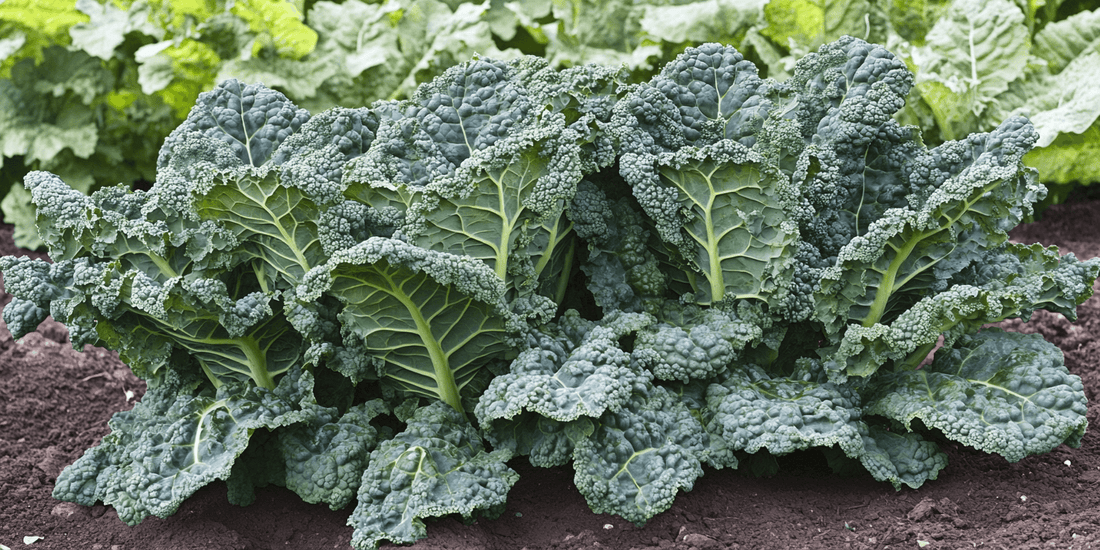What Is Dinosaur Kale? Discover the History of Lacinato Kale
If you’ve ever spotted a dark, textured leafy green at the grocery store labeled dinosaur kale, you’ve likely encountered Lacinato kale. Known for its rich flavor, striking appearance, and long culinary history, this heirloom variety has become a favorite among gardeners and chefs alike.
But what is dinosaur kale, and what makes it so special compared to other types of kale? Let’s explore the fascinating heritage, appearance, and growing habits of Lacinato kale, also called Tuscan kale, Italian kale, or black kale.

What Is Dinosaur Kale?
Lacinato kale, or dinosaur kale, is a traditional Italian variety that dates back hundreds of years, originating in the Tuscany region. Its Italian name, Cavolo Nero (meaning “black cabbage”), refers to its dark, blue-green leaves. The nickname dinosaur kale comes from those same deeply textured, bumpy leaves that resemble reptilian skin.
Unlike curly kale, which has frilly leaves, Lacinato kale has long, narrow, and flat leaves that can grow up to 2–3 feet tall. These leaves are tender and slightly sweet, with a nutty flavor that becomes even richer after exposure to cold weather. This cold-hardy trait makes it an ideal crop for fall and winter gardens.
The Italian Heritage of Lacinato Kale
Lacinato kale has deep roots in Italian cuisine, particularly in Tuscany. Often called Tuscan kale or kale Tuscan kale in recipes, it’s a key ingredient in ribollita, a traditional Tuscan soup made with beans and vegetables. This kale Italian heirloom has been cultivated for centuries and remains one of the most beloved varieties of kale for its balance of flavor, nutrition, and adaptability.
You can learn more about its regional growing techniques in Growing Dinosaur Kale in Northern California, which offers helpful guidance for gardeners in similar climates.
Why Gardeners Love Lacinato Kale
Among the different types of kale to grow, Lacinato kale stands out for its combination of beauty and resilience. It’s easy to grow and thrives in raised beds, containers, or traditional garden plots. This cold hardy leafy green prefers cooler temperatures but can tolerate heat better than many other types of kale.
When planted in nutrient-rich soil and given regular watering, Lacinato kale produces consistent yields of blue-green leaves that can be harvested individually throughout the season. It’s a great option for gardeners who want a long-lasting, low-maintenance crop that continues to grow new leaves even after harvesting.
If you’re ready to start growing your own, check out certified organic options like the Dino Kale Art Pack – Certified Organic or PVFS Kale Lacinato Seeds, available in the Kale Seeds Collection at GrowOrganic.com.
For detailed planting and care advice, explore How to Grow Kale, a step-by-step video that walks you through sowing, spacing, and harvesting kale successfully.

Nutritional Value and Culinary Uses
Like other types of kale, Lacinato kale is a nutritional powerhouse. It’s rich in vitamins A, C, and K, calcium, and antioxidants, making it one of the healthiest greens you can add to your diet.
In the kitchen, its versatility shines. You can enjoy Lacinato kale raw in salads, where its softer texture and nutty flavor make it easier to eat than curly kale. It’s also delicious when lightly sautéed, added to soups, or baked into crispy kale chips.
Try it in recipes like the hearty Kale & Black Bean Salad for a filling, protein-packed meal. For more inspiration on why kale deserves a place in your garden and kitchen, visit Kale: The Superfood of the Garden.
Conclusion
From its striking blue-green leaves and rich Italian heritage to its cold hardy resilience and nutty flavor, Lacinato kale truly earns its nickname dinosaur kale. Whether you’re growing it in raised beds or discovering it at your local grocery store, this leafy green is both a visual standout and a culinary delight.
Explore its full potential—grow it organically, cook it creatively, and savor a taste of history in every leaf.

